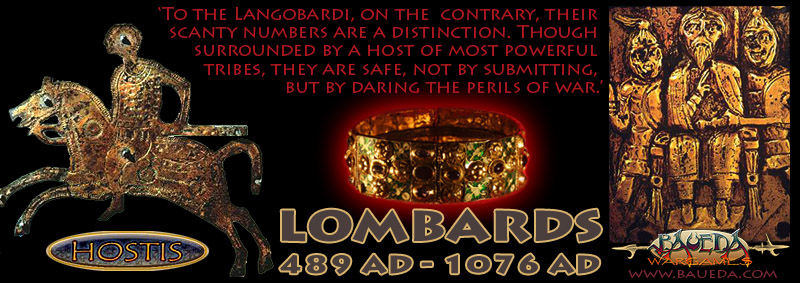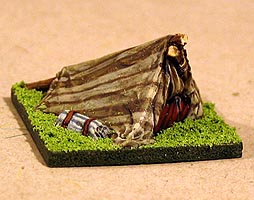

| 15mm Lombards Figures | AVAILABLE NOW! |

|
||
The Lombards (Latin Langobardi, whence the alternative names Langobards and Longobards) were a Germanic people originally from Northern Europe who settled in the valley of the Danube and from there invaded Byzantine Italy in 568 under the leadership of Alboin. They established a Lombard Kingdom, later named Kingdom of Italy, which lasted until 774, when it was conquered by the Franks. The fullest account of Lombard origins, history, and practices is the Historia gentis Langobardorum (History of the Lombards) of Paul the Deacon, written in the 8th century. Paul's chief source for Lombard origins, however, is the 7th-century Origo Gentis Langobardorum (Origin of the People of the Lombards). The Origo tells the story of a small tribe called the "Winnili" dwelling in southern Scandinavia (Scadanan). The first mention of the Lombards occurred between AD 9 and 16, by the Roman court historian Velleius Paterculus, who accompanied a Roman expedition as prefect of the cavalry. Paterculus described the Lombards as "more fierce than ordinary German savagery." Tacitus counted the Lombards as a Suebian tribe, accordingly these figures are also perfect for Early Frankish, Alamanni, Quadi, Suevi, Rugian or Turcilingi and also as the heaviest types for early Ostrogothic, Herul, Sciri or Taifali. |
|
  Figures sculpted by M. Campagna Samples painted by Ruben Torregrosa |
|
 Figures sculpted by M. Campagna Samples painted by Ruben Torregrosa |
|
 Figures sculpted by M. Campagna Samples painted by M. Boetti |
|
 Figures sculpted by C. Berni Painted sample will be available shortly! |
Code: 15GOT |  |
|  |
|